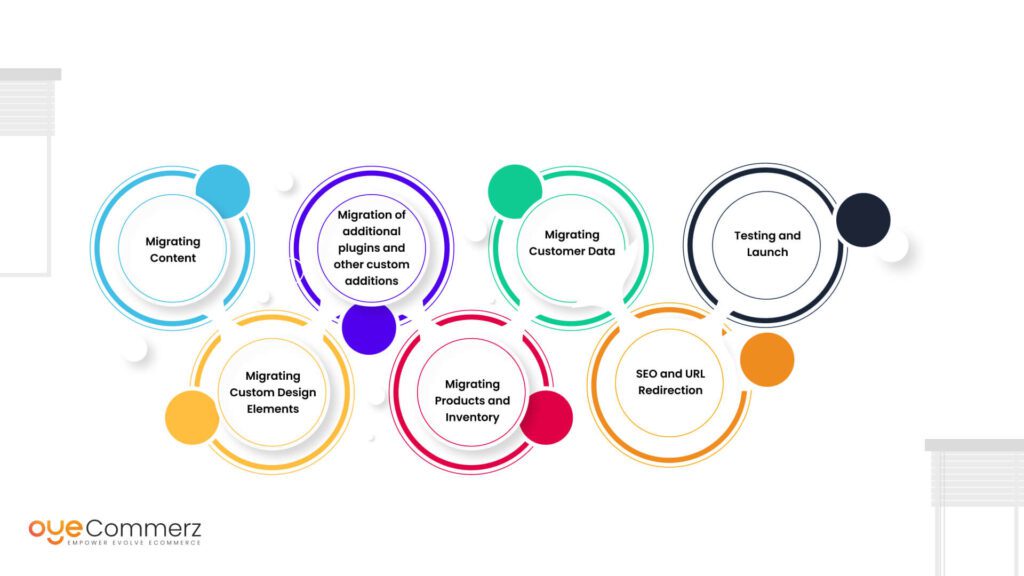In the dynamic sphere of eCommerce, picking the right platform is crucial for your business's success. If you’re currently using WordPress and considering a migration to Shopify, you’re not the only one. Countless businesses are switching to utilize Shopify’s powerful capabilities, user-friendliness, and expandability. This guide will take you through the steps of migrating from WordPress to this platform smoothly, making sure that you realize your eCommerce potential.
Why Migrate from WP to this platform?
Prior to starting the migration process, it’s essential to realize why this change can be beneficial for your online store:
User-Friendly Interface: Shopify offers an user-friendly interface that simplifies store management, making it easier for non-technical users.
Scalability: As your company grows, Shopify can accommodate higher traffic and sales without sacrificing speed.
Integrated Features: Shopify provides integrated tools for search engine optimization, analytics, payment handling, and more, minimizing the necessity for multiple plugins.
Enhanced Security: With Shopify, you utilize strong security measures that safeguard sensitive customer details.
Steps for a Effortless Migration
Migrating your online store from WP to Shopify requires key phases.
Here’s how to facilitate a smooth transition:
Prepare Your Migration Plan
Kick-off by drafting your migration plan. Pinpoint which components of your existing site you plan to transfer, such as:
Product data
User details
Purchase logs
Blog content
Pick the Best Migration Option
Based on your requirements, choose a migration plan that suits your eCommerce goals. Professional services delivers several plans:
Basic Migration Package: Ideal Shopify advanced customization for compact stores with minimal products.
Mid-Tier Plan: Recommended for medium-sized businesses with intermediate demands.
Advanced Plan: Perfect for larger stores requiring extensive customization.
Save Your Information
Ahead of initiating the migration, guarantee that you have a comprehensive copy of your WP site. This action is crucial in the event anything goes off track during the transfer.
Retrieve Your Data from WP
Use tools or custom scripts to extract essential content from your WP site:
Items
Users
Orders
Articles
Migrate Information into Shopify
Once you have your content extracted, use Shopify’s import tools or third-party apps to transfer your content into your Shopify store. Confirm that all content is accurately structured and aligned.
Personalize Your Shopify Site
Once importing data, tailor your Shopify store’s theme to match with your style. Look into hiring a developer if you need complex customization.
Configure Checkout Systems and Delivery Settings
Arrange payment gateways and logistics options in Shopify to facilitate a smooth transaction experience for customers.
Adopt Search Engine Optimization Standards
To keep your online visibility during the change:
Use 301 link updates from existing URLs to migrated ones.
Revise metadata.
Optimize visual content and copy for search engines.
Evaluate Your Updated Store
Before going live, completely review your migrated store. Look out for any errors, transaction errors, or missing data.
Launch Your Platform
Once everything is in ready, it’s the opportunity to launch! Announce the transition to your clients and encourage them to discover the new capabilities of your Shopify product import tools Shopify store.
Post-Migration Support
Even after launching your new store, regular assistance is essential. Consider working with experts who can guide with:
Troubleshooting
Marketing strategies
Performance optimization
Conclusion
Migrating from WordPress to Shopify can be a crucial decision for your online retail. By using this guide and utilizing professional services like those offered by dedicated providers, you can ensure a smooth transition that improves your digital storefront. Accept the change and realize the advantages of Shopify today!
